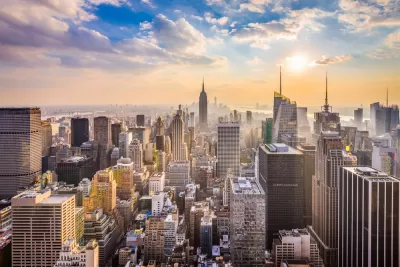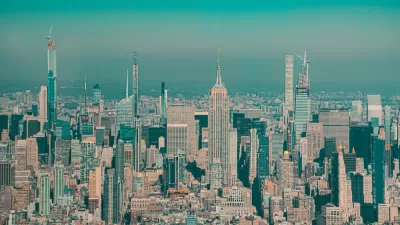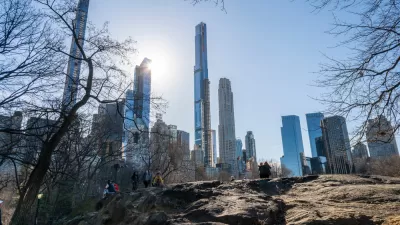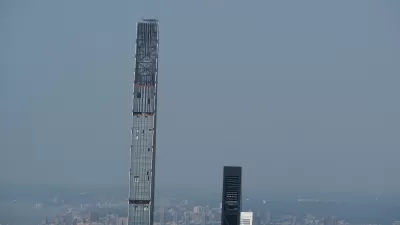After a decade of skyward expansion, even more skyscrapers are on the horizon in Manhattan.

Stefanos Chen reports on the next wave of skyscrapers expected to transform the New York City skyline, following a high-rise building boom that has added numerous luxury condo towers to the city in recent years.
"There are currently nine completed towers in New York that are over 1,000 feet tall, and seven of them were built after 2007. Nearly twice that many — another 16 such towers — are being planned or are under construction, according to the Council on Tall Buildings and Urban Habitat, a Chicago-based nonprofit that tracks high-rise construction," according to Chen.
Chen describes the wave of construction as unprecedented, and also writes that the city's skyline "looks starkly different than it did a decade ago, redrawn by the massive Hudson Yards project on the West Side of Manhattan; a profusion of towers on and around Billionaires’ Row in Midtown; and the revitalization of Lower Manhattan, with One World Trade Center leading the way."
The article includes images of Lower Manhattan from 1925, 1980, 2001, and 2019; the East Side of Manhattan from 1931, 1960, and 2019; and the West Side of Manhattan from 1931, 1984, and 2019. The article places the plans for new skyscrapers in context of the technological innovations that enabled new building heights, and the cultural importance of skyscrapers to the popular imagination of the city.
In a follow up article, Ryan Deffenbaugh examines five examples of skyscrapers that will leave a lasting mark on the city's skyline in the near future: Tower Fifth, Central Park Tower, 111 West 57th Street, JPMorgan Headquarters, and One Vanderbilt.
FULL STORY: New York City’s Evolving Skyline

Planetizen Federal Action Tracker
A weekly monitor of how Trump’s orders and actions are impacting planners and planning in America.

Map: Where Senate Republicans Want to Sell Your Public Lands
For public land advocates, the Senate Republicans’ proposal to sell millions of acres of public land in the West is “the biggest fight of their careers.”

Restaurant Patios Were a Pandemic Win — Why Were They so Hard to Keep?
Social distancing requirements and changes in travel patterns prompted cities to pilot new uses for street and sidewalk space. Then it got complicated.

Platform Pilsner: Vancouver Transit Agency Releases... a Beer?
TransLink will receive a portion of every sale of the four-pack.

Toronto Weighs Cheaper Transit, Parking Hikes for Major Events
Special event rates would take effect during large festivals, sports games and concerts to ‘discourage driving, manage congestion and free up space for transit.”

Berlin to Consider Car-Free Zone Larger Than Manhattan
The area bound by the 22-mile Ringbahn would still allow 12 uses of a private automobile per year per person, and several other exemptions.
Urban Design for Planners 1: Software Tools
This six-course series explores essential urban design concepts using open source software and equips planners with the tools they need to participate fully in the urban design process.
Planning for Universal Design
Learn the tools for implementing Universal Design in planning regulations.
Heyer Gruel & Associates PA
JM Goldson LLC
Custer County Colorado
City of Camden Redevelopment Agency
City of Astoria
Transportation Research & Education Center (TREC) at Portland State University
Camden Redevelopment Agency
City of Claremont
Municipality of Princeton (NJ)





























